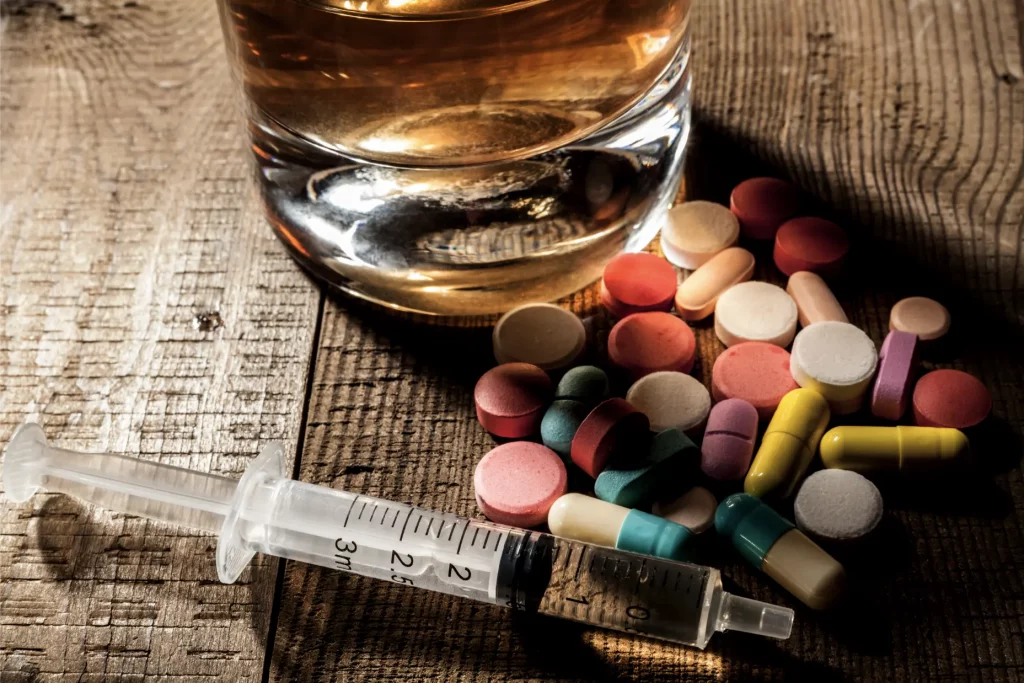Although prescription drugs and alcohol are widely used among the public, it isn’t advisable to mix them. Mixing prescription drugs and alcohol interferes with medication compositions, presenting harmful side effects for users. Prescription drugs are safe and effective in improving people’s health outcomes provided appropriate consumption and the absence of alcohol.
ALCOHOL AND PRESCRIPTION DRUGS
Alcohol is an organic compound found in beer, spirits, and wine created from fermenting yeast and sugars. It is a depressant that slows down central nervous system operations. Therefore, it affects a person’s mood, memory, thoughts, behavior, and coordination.
Despite the legal status of alcohol, it is illegal for people below the legal age. Motorists should not drive when under the influence because alcohol causes cognitive impairment, which increases the risk of accidents. Pregnant women, nursing mothers, people on medication, and people in rehabilitation should also avoid alcohol.
Prescription drugs are medications that are illegal to sell or purchase in pharmacies without authorization from a licensed doctor. Prescription drugs vary in use, including treating illnesses and managing pain and symptoms associated with various diseases, conditions, or surgeries. Some commonly used prescription drugs include benzodiazepines, oxycodone, codeine, and amphetamine.
THE ADVERSE EFFECTS OF ALCOHOL CONSUMPTION
Alcohol has a variety of effects among users. The effects of alcohol are influenced by consumption rate, age, sex, genetics, and health. For example, consuming a drink with more than 14 grams of pure alcohol is excessive and beyond the standard limit.
Some adverse side effects of drinking alcohol include;
• Increased risk of mental health conditions such as depression, stress, suicidal behavior, anxiety, and aggressive behavior.
• Increased risk of esophagus, liver, and intestinal cancer.
• Cardiovascular diseases
• Sleep problems
• Alcohol use disorder and substance abuse disorder.
• Coordination and movement problems.
• Increased risk of road accidents and personal injuries.
• Increased risk of violence.
• Birth complication, miscarriage, and cognitive development problems for babies born from alcoholic pregnant women.
• Socio-economic losses because of addiction.
• Cognitive impairment and memory loss.
• Heart and liver diseases.
• Slows breathing.
• Coma or death from excessive consumption.
EFFECTS OF PRESCRIPTION DRUGS
Prescription drugs have different side effects on users depending on the impact of their ingredients on the body. However, some typical side effects include nausea, cognitive impairment, drowsiness, and difficulties in movement. Long-term side effects may include liver damage, weight loss, heart problems, addiction, and substance abuse disorder.
Although prescription drugs serve medical purposes, some people misuse them. Some prescription drugs have addictive compounds, and others are taken for several years, increasing addiction risk. Prescription drug misuse can also turn into substance abuse if the user mixes the medication with drugs such as alcohol.
MIXING PRESCRIPTION DRUGS AND ALCOHOL
People are likely to mix prescription drugs and alcohol to experience euphoria when struggling with prescription addiction. They are also likely to mix prescription drugs and alcohol when struggling with alcohol use disorder. Unfortunately, mixing prescription drugs and alcohol is dangerous because both drugs have independent side effects.
Mixing prescription drugs and alcohol has adverse side effects on the medication. Alcohol may prevent the prescription medication from effectively serving as pain relief or treating the user’s medical condition. It can also react with prescription medication to increase the intensity of symptoms. This reaction may also increase toxins in the bloodstream affecting the user’s health.
Prescriptions such as opioid painkillers, prescription stimulants, benzodiazepines, antipsychotics, and antidepressants generate different side effects when mixed with alcohol. Opioid painkillers are high addictive pain-relieving medications such as oxycodone and codeine. Opioid painkillers combined with alcohol increase users’ drowsiness, fainting, and lack of coordination.
Prescription stimulants are medications prescribed for ADHD patients to increase their energy, alertness, and activity. The abuse of prescription stimulants increases the risk of addiction and alcohol use. Mixing alcohol and prescription stimulants results in concentration problems, liver damage, and heart problems.
Benzodiazepines help users relieve panic attacks and anxiety by inducing operations of the GABA receptors in the brain. Unfortunately, alcohol presents the same effect on the GABA receptors, increasing the risk of alcoholism among benzodiazepine users. When benzodiazepines mix with alcohol, it causes cognitive impairment, liver damage, breathing problems, alcohol poisoning, and overdose risk.
Antipsychotic prescriptions are medications for mental health conditions such as schizophrenia and psychosis. Alcohol consumption among users inhibits the effects of antipsychotic prescription. Mixing alcohol with antipsychotic prescriptions increases fatigue, sleepiness, and alcohol addiction.
Antidepressants help treat depression, anxiety, and other depressive mental health problems. Alcohol is an antidepressant; as such, the mixing of the two drugs only intensifies antidepressant effects. It increases the risk for chronic depression and suicidal behavior.
Despite different side effects for other prescriptions, mixing alcohol and prescription drugs causes organ damage and cancer. Some users may experience a fatal heart attack, stroke, or even death from the drug combination’s deadly reaction. Other effects include engaging in risky behavior such as violence and illicit sexual conduct.
Besides the mentioned categories, users of antibiotics, muscle relaxers, sleeping pills, diabetes, and arthritis prescriptions should also avoid alcohol consumption.
HOW TO TREAT THE EFFECTS OF PRESCRIPTION DRUGS AND ALCOHOL ABUSE
Prescription drugs and alcohol abuse, both independently and collectively, result in addiction and other health side effects for users. People experiencing prescription and alcohol dependence should inform their doctors before developing into a chronic condition. Loved ones of people struggling with prescription drugs and alcohol abuse should consult psychiatrists to help them.
People with prescription drug and alcohol abuse need help from professional doctors and psychiatrists within qualified addiction rehabilitation centers. They should attend an addiction treatment program that includes services such as monitored medical detox. Monitoring will help the patient complete prescription and alcohol addiction withdrawal without the temptation of relapsing.
Prescription drugs and alcohol abusers should also receive CBT therapy and group and or individual addiction therapy. These forms of therapy help them eradicate the bad habits of prescription drugs and alcohol abuse. After complete therapy patients replace bad habits with constructive behaviors such as engaging in physical fitness.
ABOUT EVERLAST RECOVERY CENTERS
Everlast Recovery Centers offer leading alcohol addiction treatment services in southern California and nationally. We have a committed team of qualified doctors trained in performing different tasks, including offering alcohol detox and psychological counseling. Contact us if you are looking for an institution that provides reliable client-centered treatment plans for addiction recovery.





